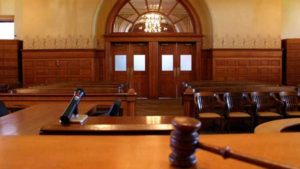 The Supreme court continued in relevant part: Three essential elements must be considered to determine whether a Brady violation has occurred: (1) the evidence at issue must be favorable to the accused, either as exculpatory or impeachment evidence; (2) the State must have suppressed the evidence, either purposely or inadvertently; and (3) the evidence must be material to the defendant’s case. The first Brady element is clearly satisfied here. Withholding the Norton Affidavit and the Muncy Report deprived defense counsel of the opportunity to cite the evidence of third-party guilt in their openings and to cross-examine the four officers who had already testified against defendants about evidence acquired at the crime scene and referred to in the withheld documents. The second Brady element is also satisfied. The State acknowledges that the withheld reports were in a file in the State’s office for a significant time before trial.
The Supreme court continued in relevant part: Three essential elements must be considered to determine whether a Brady violation has occurred: (1) the evidence at issue must be favorable to the accused, either as exculpatory or impeachment evidence; (2) the State must have suppressed the evidence, either purposely or inadvertently; and (3) the evidence must be material to the defendant’s case. The first Brady element is clearly satisfied here. Withholding the Norton Affidavit and the Muncy Report deprived defense counsel of the opportunity to cite the evidence of third-party guilt in their openings and to cross-examine the four officers who had already testified against defendants about evidence acquired at the crime scene and referred to in the withheld documents. The second Brady element is also satisfied. The State acknowledges that the withheld reports were in a file in the State’s office for a significant time before trial.
The third Brady element requires that the suppressed evidence be material to defendants’ case. Evidence is material if there is a reasonable probability that timely production of the withheld evidence would have led to a different result at trial. Here, the State’s case relied, in part, on Robinson-Crews’s testimony, but Robinson-Crews gave inconsistent statements to police, erroneously implicated Dawson in Crews’s dying declaration, and filed a false police report against Brown. The circumstantial evidence upon which the State relied was, likewise, assailable. Because counter-arguments were available to challenge a great deal of the evidence on which the State relied at trial, the materiality inquiry is influenced by the following two evidentiary rulings made after the withheld evidence was provided to defendants: (1) overturning a pretrial determination that excluded Crews’s dying declaration; and (2) excluding the Norton Affidavit as unreliable.
Defendant’s usually fail when arguing discovery violations on appeal when they do not actually have the discovery at issue. They usually do not have it unless they go to trial and have it turned over belatedly as in the case at hand. Or, they ask the judge to keep it sealed under a protective order to be reviewed on appeal.
